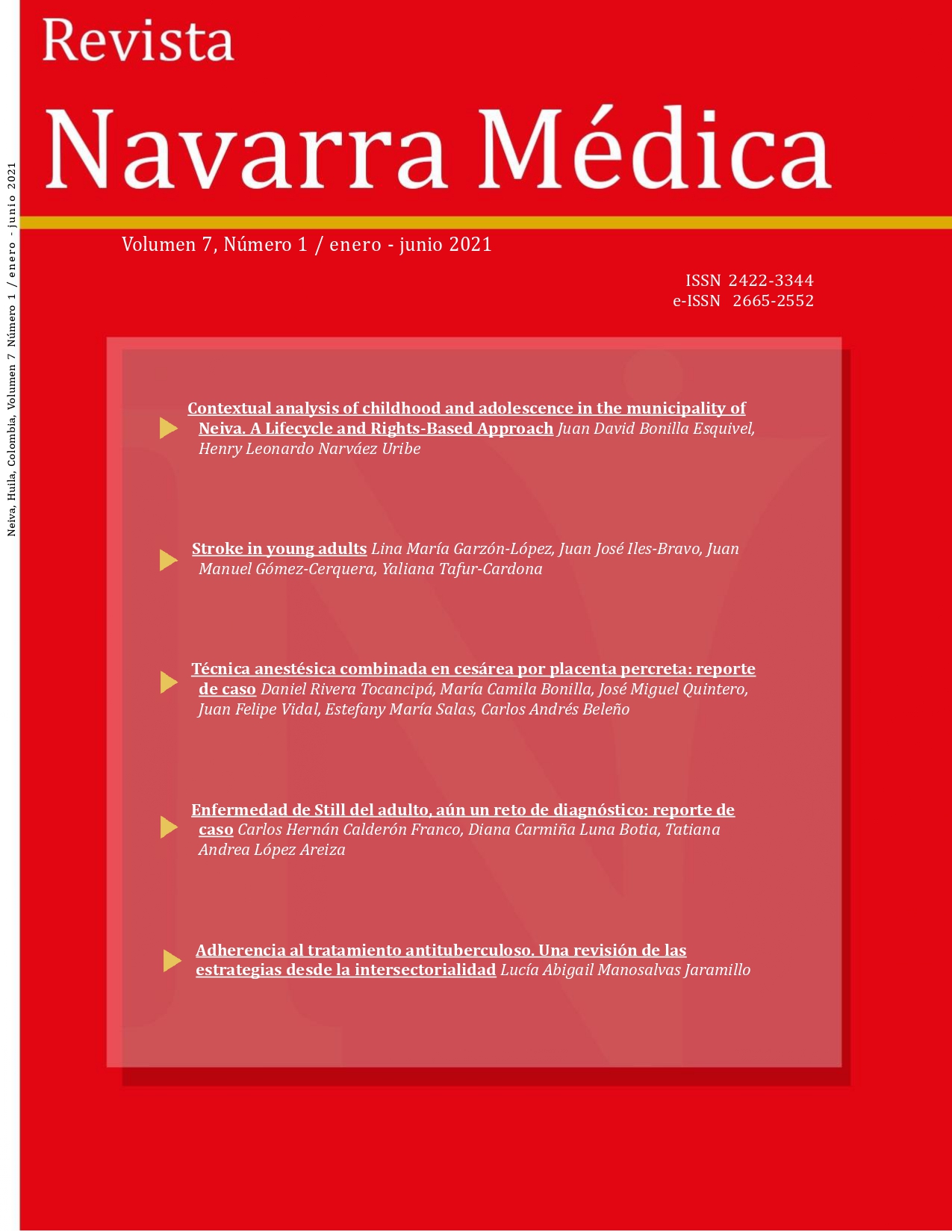Combined anesthetic technique in cesarean section for placenta percreta: case report
DOI:
https://doi.org/10.61182/rnavmed.v7n1a3Keywords:
Placenta accreta, General anesthesia, Spinal anesthesia, Placenta Accreta Spectrum (PAS), PercretaAbstract
Abnormal placental attachment is rare and is of clinical importance due to its significant morbidity and mortality risk, as it can lead to massive postpartum hemorrhage, perforation, invasion, and urinary tract injury. It still remains a challenge for surgical management and should be approached in an interdisciplinary manner. There is ambiguity in the choice of the optimal anesthetic technique for this condition, both in the case of cesarean delivery and elective hysterectomy, due to maternal-fetal factors that are relevant to the safety of the mother-child binomial. The present case describes the experience of a 35-year-old woman with a case of placenta previa and placental accreta. The protocol, anesthetic technique and pharmacologic strategy employed, response and outcome are detailed. The current evidence is in favor of the anesthetic techniques used.
References
Cahill AG, Beigi R, Heine RP, Silver RM, Wax JR. Placenta Accreta Spectrum. American Journal of Obstetrics and Gynecology. 2018;219(6):B2-16.
Silver RM, Branch DW. Placenta Accreta Spectrum. New England Journal of Medicine. 2018;378(16):1529-36.
Ramírez Cabrera Juan Orestes, Zapata Díaz Betsy Micol. Espectro de placenta acreta. Rev. peru. ginecol. obstet. 2020; 66(1): 49-55. http://dx.doi.org/10.31403/rpgo.v66i2232
John Jairo Páez L, Navarro VJR. Regional versus general anesthesia for cesarean section delivery. Revista Colombiana de Anestesiologia. 2012;40(3):203-6.
Hawkins R, Evans M, Hammond S, Hartopp R, Evans E. Placenta accreta spectrum disorders - Peri-operative management: The role of the anaesthetist. Best Practice and Research: Clinical Obstetrics and Gynaecology. 2021;72(xxxx):38-51.
Markley JC, Farber MK, Perlman NC, Carusi DA. Neuraxial Anesthesia During Cesarean Delivery for Placenta Previa With Suspected Morbidly Adherent Placenta. Anesthesia & Analgesia. 2018;127(4):930-8.
Véliz OF, Núñez SA, Selman AA. Acretismo placentario: Un diagnóstico emergente. Abordaje quirúrgico no conservador. Rev. chil. obstet. ginecol. 2018; 83(5): 513-526. http://dx.doi.org/10.4067/s0717-75262018000500513.
Garmi G, Salim R. Epidemiology, Etiology, Diagnosis, and Management of Placenta Accreta. Obstetrics and Gynecology International. 2012;2012:1-7.
Sener EB, Guldogus F, Karakaya D, Baris S, Kocamanoglu S, Tur A. Comparison of neonatal effects of epidural and general anesthesia for cesarean section. Gynecologic and Obstetric Investigation. 2003;55(1):41-5.
Snegovskikh D, Clebone A, Norwitz E. Anesthetic management of patients with placenta accreta and resuscitation strategies for associated massive hemorrhage. Current Opinion in Anaesthesiology. 2011;24(3):274-81.
Orbach-Zinger S, Weiniger CF, Aviram A, Balla A, Fein S, Eidelman LA, et al. Anesthesia management of complete versus incomplete placenta previa: a retrospective cohort study. Journal of Maternal-Fetal and Neonatal Medicine. 2018;31(9):1171-6.
Kuczkowski KM. Anesthesia for the repeat cesarean section in the parturient with abnormal placentation: What does an obstetrician need to know? Archives of Gynecology and Obstetrics. 2006;273(6):319-21.
Downloads
Published
Issue
Section
License
Copyright (c) 2021 María Camila Bonilla Llanos, Daniel Rivera Tocancipá, José Miguel Quintero Díaz, Juan Felipe Vidal Martínez, Estefany María Salas Danies, Carlos Andrés Beleño Dumar

This work is licensed under a Creative Commons Attribution-NonCommercial 4.0 International License.












